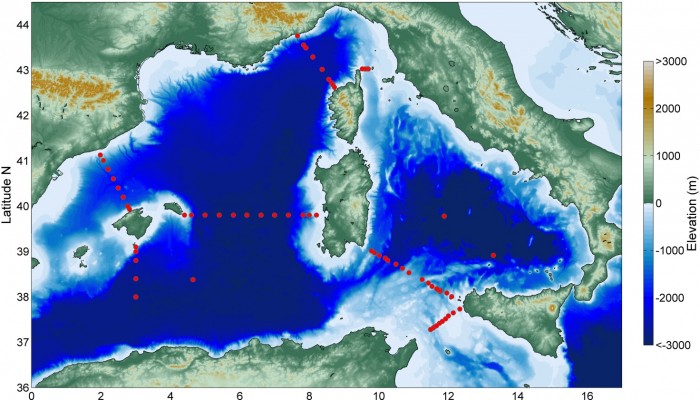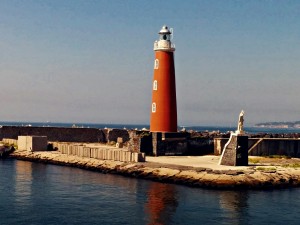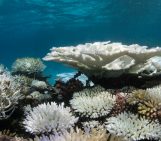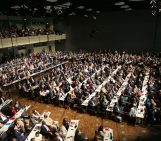
Simona Aracri, a PhD student at University of Southampton, spent a month aboard the research vessel, R/V Minerva Uno, cruising the Mediterranean Sea. Simona and the team of scientists aboard the boat documented their experiences via blog. Over the coming weeks we’ll feature a few of the posts the team shared over the one month voyage: you can expect to find out what life aboard a large research vessel is like, what scientists do when studying the ocean depths and how the whole team has been enriched by the experience. Before we get stuck into the diary entires, a little background on the research aims of the cruise.
The cruise in the Western Mediterranean is part of the EU project OCEAN-CERTAIN – “Ocean Food-web Patrol – Climate Effects: Reducing Targeted Uncertainties with an Interactive Network”. The OCEAN-CERTAIN project has 11 partners from 8 European countries, as well as Chile and Australia. The Norwegian University of Science and Technology (NTNU) is the project coordinator. OCEAN-CERTAIN is investigating the impact of climatic and non-climatic stressors (e.g., ocean acidification, warming of the surface layer and associated increased stratification) on the functionality of the marine food web and the connected biologically-driven sequestration of carbon from the atmosphere to the deep sea (“biological pump”). This will be done by utilising existing ecosystem models employing existing data, in addition to mesocosm ( an experimental tool that brings a small part of the natural environment under controlled conditions), lab-scale experiments and field studies. OCEAN-CERTAIN will also show how potential climate-driven physical, chemical and biological changes may affect relevant economic activities and human welfare and help to identify adaptation pathways.
The cruise lasted 4 weeks crossing all seas in the Western Mediterranean, with the exception if the Alboran Sea due to severe weather, under the supervisor of the co-chief scientists Jacopo Chiggiato and Katrin Schroeder and the chief technician on-board Mireno Borghini from CNR-ISMAR, Italy.
5th August 2015 – The modern Captain’s log

Naples port and patron saint Gennaro waving during the departure. Three times a year saint Gennaro’s blood, kept in sealed ampules, is liquified in front of the gathered faithful in Naples Cathedral.
Image Credit: Simona Aracri.
Bon voyage guagliune!
With a fantastic weather forecast, clear blue waters and the ship packed to capacity with scientists and their equipment, the R/V Minerva Uno sailed this morning from Napoli heading for her first station in the Mediterranean Sea.
Our scientific complement, representing institutions from 4 countries (Italy, Germany, UK and Turkey), were up late last night preparing the ship’s laboratory space. Today might be a relaxing day and the fine Italian cuisine, coffee and wine onboard may sound like a little holiday, but the cruise program will be punishing for the next two weeks. Round-the-clock work starts at 23:00 tonight with an eat-sleep-sample-repeat routine between stations. Therefore everyone was keen to get set up yesterday and to get one final ‘normal’ night of sleep.
The overarching theme of our cruise, and of the EU funded project Ocean Certain as a whole, is to investigate how climate change will affect the ocean’s biological carbon pump. We know that with increasing average global temperatures, climate change is making seawater in the Mediterranean warmer and saltier. But, we do not yet know exactly what consequences this will have for marine ecosystems. Changes to the physical properties of the water column in the Mediterranean have direct implications both for fisheries and for the role of the Ocean as a CO2 sink. The sensitivity of the Mediterranean to climate change because of its relatively shallow depth and enclosed nature, combined with its importance to the economies of surrounding countries is why it is one of 3 geographical areas selected for intensive study by the Ocean Certain project. The results of this cruise will be complemented by an east Mediterranean cruise, plus a mesocosm (MesoMed) and multistressor experiments in Crete early next year (2016).
We are now busy refining plans for the next two weeks as we steadily work our way around the western Mediterranean to Menorca where some scientists will swap for the next leg and the ship will replenish supplies. At each of more than 100 stations we will deploy instruments and collect seawater samples. Most chemical and biological measurements won’t be made on-ship due to the delicate nature of the instruments required and the shear length of time it will take to process so many samples, so frozen or preserved samples will be shipped back to our respective institutions. Some chemical parameters including dissolved O2, H2O2 and alkalinity will however be quantified onboard.
Best regards from the Mediterranean!
Mark Hopwood (@Markinthelab and @OceanCertain)
By Simona Aracri, PhD student at University of Southampton and Mark Hopwood, post-doc at GEOMAR, Germany




Pingback: Check out this blog post from the Mediterranean cruise
Pingback: GeoLog | Cursing the Mediterranean: a first-hand account of a month at sea – Part 2